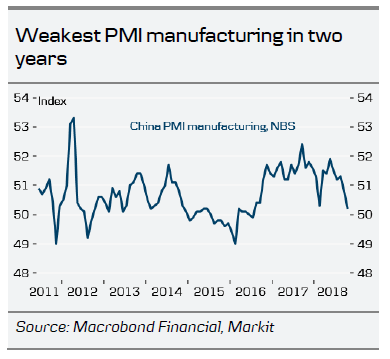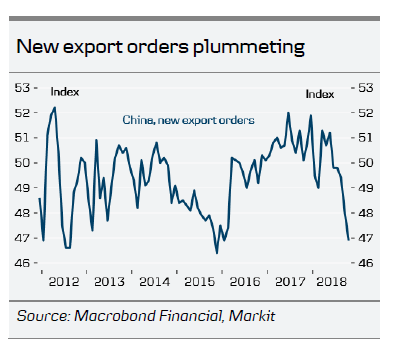Chinese PMI released overnight was very weak and points to more slowing in Q4. The official PMI manufacturing decreased to 50.2 (Consensus 50.6) in October, down from 50.8 in September. This is the lowest level in two years. In particular, new export orders are very weak, highlighting the negative effect of the trade war with the US.
We look for more weakness in coming quarters before a rebound in 2019 when the stimulus kicks in more and we expect to a trade deal at some point in the year. We believe infrastructure and housing will support growth. China could also very well announce further tax cuts for households to unleash more consumption. Both private investment and consumption have been soft, – probably related to the uncertainty on the trade war.
While the trade war is clearly painful for China in the short term, we do not believe it changes the negotiating stance with the US in the trade war. In our view, China will look for a deal for the long term and not be too affected by short-term developments. There is still a risk we will see further escalation if Xi Jinping and Donald Trump fail to get US and China back on a negotiating path when they meet at end-November. Hence, we could see the 10% rate on the USD200bn Chinese imports go up to 25% on 1 January and Trump putting tariffs on all Chinese imports. This would create further headwind for China. However, we expect a deal to be reached during 2019 (not least because it will start to hurt the US too), which would lift some of the dark clouds over the Chinese economy. At the same time, a weaker currency and stimulus should work as a cushion to the drag from exports.
The slowdown underlines continued downward pressure on CNY. We continue to see USD/CNY rising to 7.20 in 12M, up from 6.969 currently.
The private version of PMI from Caixin is due to be released tomorrow at 02:45 CET.














